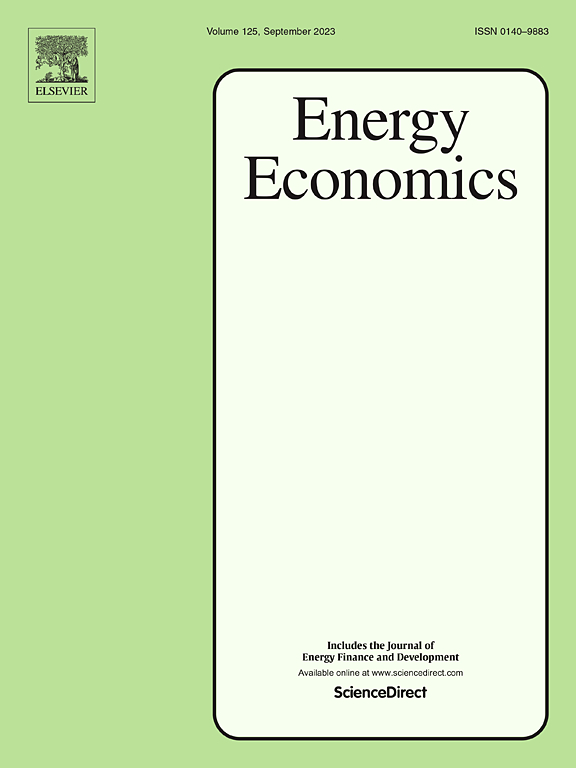The economic burden of a carbon tax on Chinese residents: A gender and income perspective
IF 13.6
2区 经济学
Q1 ECONOMICS
引用次数: 0
Abstract
Consumption-based carbon accounting helps identify key groups that influence emission reduction efforts, but current research primarily focuses on consumption differences among different income groups, neglecting the impact of gender characteristics on emissions and the potential differentiated effects of emission reduction policies on different gender groups. Therefore, on the basis of a detailed description of the consumption structure of residents grouped by income and gender, this study takes China as an example to examine the indirect carbon emissions from residents' product consumption. This study uses an input–output structural decomposition analysis model to investigate the contributions of five influencing factors to changes in consumption-based carbon emissions in China and uses an input–output price model to explore the economic burden of a carbon tax on residents grouped by gender and income. The results show that low-income females have the largest carbon tax burden ratio (i.e., the proportion of the carbon tax cost in the residents' total consumption expenditure), which is 1.12 times and 1.32 times higher than that of low-income residents and the average level, respectively. Specifically, 64.9 % (185.2 yuan) of females' carbon tax cost is related to housing consumption. Targeted implementation of supporting policies can obviously decrease the carbon tax cost of low-income residents and female residents, which can provide support for enhancing the fairness and inclusivity of emission reduction policies.
碳税对中国居民的经济负担:性别和收入视角
基于消费的碳核算有助于确定影响减排努力的关键群体,但目前的研究主要侧重于不同收入群体之间的消费差异,忽视了性别特征对排放的影响以及减排政策对不同性别群体的潜在差异效应。因此,本研究在详细描述按收入和性别分组的居民消费结构的基础上,以中国为例,考察居民产品消费的间接碳排放。本研究采用投入产出结构分解分析模型考察了五种影响因素对中国消费碳排放变化的贡献,并采用投入产出价格模型考察了碳税对按性别和收入分组的居民的经济负担。结果表明,低收入女性的碳税负比(即碳税成本占居民总消费支出的比例)最大,分别是低收入居民和平均水平的1.12倍和1.32倍。其中,女性碳税成本的64.9%(185.2元)与住房消费相关。有针对性地实施配套政策,可以明显降低低收入居民和女性居民的碳税成本,为提高减排政策的公平性和包容性提供支持。
本文章由计算机程序翻译,如有差异,请以英文原文为准。
求助全文
约1分钟内获得全文
求助全文
来源期刊

Energy Economics
ECONOMICS-
CiteScore
18.60
自引率
12.50%
发文量
524
期刊介绍:
Energy Economics is a field journal that focuses on energy economics and energy finance. It covers various themes including the exploitation, conversion, and use of energy, markets for energy commodities and derivatives, regulation and taxation, forecasting, environment and climate, international trade, development, and monetary policy. The journal welcomes contributions that utilize diverse methods such as experiments, surveys, econometrics, decomposition, simulation models, equilibrium models, optimization models, and analytical models. It publishes a combination of papers employing different methods to explore a wide range of topics. The journal's replication policy encourages the submission of replication studies, wherein researchers reproduce and extend the key results of original studies while explaining any differences. Energy Economics is indexed and abstracted in several databases including Environmental Abstracts, Fuel and Energy Abstracts, Social Sciences Citation Index, GEOBASE, Social & Behavioral Sciences, Journal of Economic Literature, INSPEC, and more.
 求助内容:
求助内容: 应助结果提醒方式:
应助结果提醒方式:


